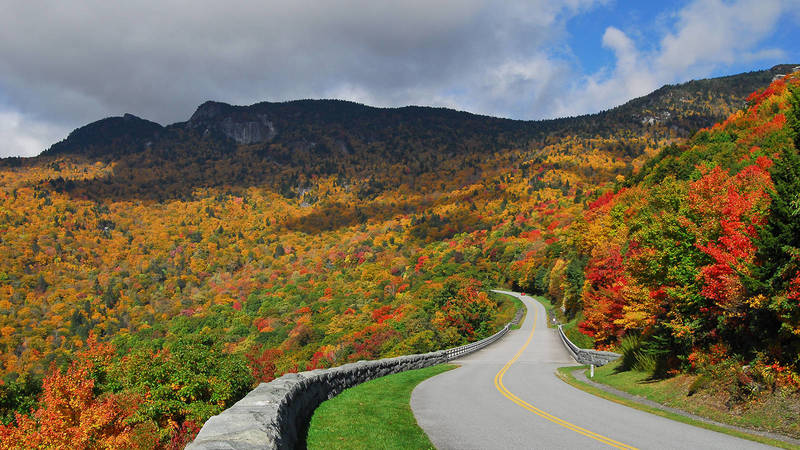Closed parks & facilities, shortened hours, reduced maintenance, and elimination of educational programs will cut jobs and devastate tourism-dependent economies
Washington, D.C. – As Congress and the White House struggle to find a compromise to avoid across-the-board budget cuts known as the sequester, nearly 300 businesses who would be directly impacted by national park closures and reduced visitor services today warned the looming cuts will have devastating impacts on their businesses and local economies nationwide.
“The basic truth is that gateway community businesses depend on our national parks being open and properly funded. Our economy depends on their economy,” said Luke D. Hyde, owner of the Calhoun Country Inn near Great Smoky Mountains National Park in Bryson City, N.C.
The National Parks Conservation Association (NPCA) has been working with businesses across the country to make sure Congress and the President hear their concerns and echoed their remarks. “These indiscriminate across-the-board cuts to our 398 national parks will harm tourism-dependent businesses and communities if our elected leaders allow them to last. Millions of Americans who visit parks rely on these businesses for lodging, tour guides and meals. If national parks are closed or inaccessible due to reduced hours, it hurts businesses and visitors,” said NPCA President Tom Kiernan.
The National Park Service (NPS) earlier this week released annual economic data showing the positive impact national parks have in states (click here to download). Nationwide, national parks contribute more than $30 billion in economic activity and support more than a quarter million jobs. Park advocates say an upcoming $110 million cut to the Park Service budget will not only be devastating to the parks themselves, but to the many businesses and communities that rely on them to drive sales, and to families that rely on our national parks as affordable and inspiring destinations.
In a letter addressed to President Obama and Congress, businesses rallied to state the harsh reality that reducing park budgets kills jobs. Local business owner of Alaska Wildland Adventures Kirk Hoessle said, “Congress needs to understand that my business suffers when Denali National Park suffers from cuts. Not only do we need to keep park roads and visitor centers open, but we need to make sure visitors have a great experience.”
William Duckwall, manager of Uncle Ducky Outdoors, an outdoor outfitting company that has been operating in Michigan’s Upper Peninsula since 1988 said, “More cuts to national parks mean less rangers and services, and that isn’t good for my business or any of my neighbors’ businesses.”
According to a recently leaked Park Service memo about potential impacts to park budgets, information suggests the sequester will cause drastic cuts to jobs, educational programs, visitor centers, and visitor access points, including:
• Jobs : Blue Ridge Parkway would cut 21 seasonal interpretive ranger programs, which would result in the closure of 50% of its visitor center-contact stations at our country’s most-visited national park site. By eliminating these seven stations, an 80 mile distance will be put in between each open facility.
• Education : Gettysburg National Military Park would eliminate 20% of its Student Education Programs during the spring, which will impact 2,400 students.
• Impact to Gateway Communities : Glacier National Park’s Going-to-the-Sun Road would delay its reopening by two weeks. In previous instances, closure of the road has resulted to $1 million in lost revenue daily, to surrounding communities and concessions.
• Permanent Visitor Center Closure : Mount Rainier National Park would permanently close its Ohanapecosh Visitor Center, affecting 60,000-85,000 visitors.
• Tourism : Independence National Historical Park would close eight of 16 interpretive sites in the spring and fall, such as the Declaration House, the New Hall Military Museum, and the Todd House, impacting over 84,000 visitors.
“It’s alarming that this very avoidable threat could become a reality. From Yellowstone to Cape Cod, the Grand Canyon and Great Smoky Mountains, our national heritage and local economies are at risk,” said Kiernan.
Every dollar invested in the National Park Service generates about ten dollars in economic activity—yet in today’s dollars, the Park Service budget has already declined by 15 percent over the last decade. According to a recent poll, 9 out of 10 agree that funding for our national parks should be held stable or increased (click here to view the full poll).
Unless Congress and the Administration reach a budget deal by this Friday, March 1, the across-the-board sequester will go into effect as early as the weekend.
###
About National Parks Conservation Association
Since 1919, the nonpartisan National Parks Conservation Association (NPCA) has been the leading voice in safeguarding our national parks. NPCA and its more than one million members and supporters work together to protect and preserve our nation’s natural, historical, and cultural heritage for future generations. For more information, visit www.npca.org.
For Media Inquiries
-
Issues


